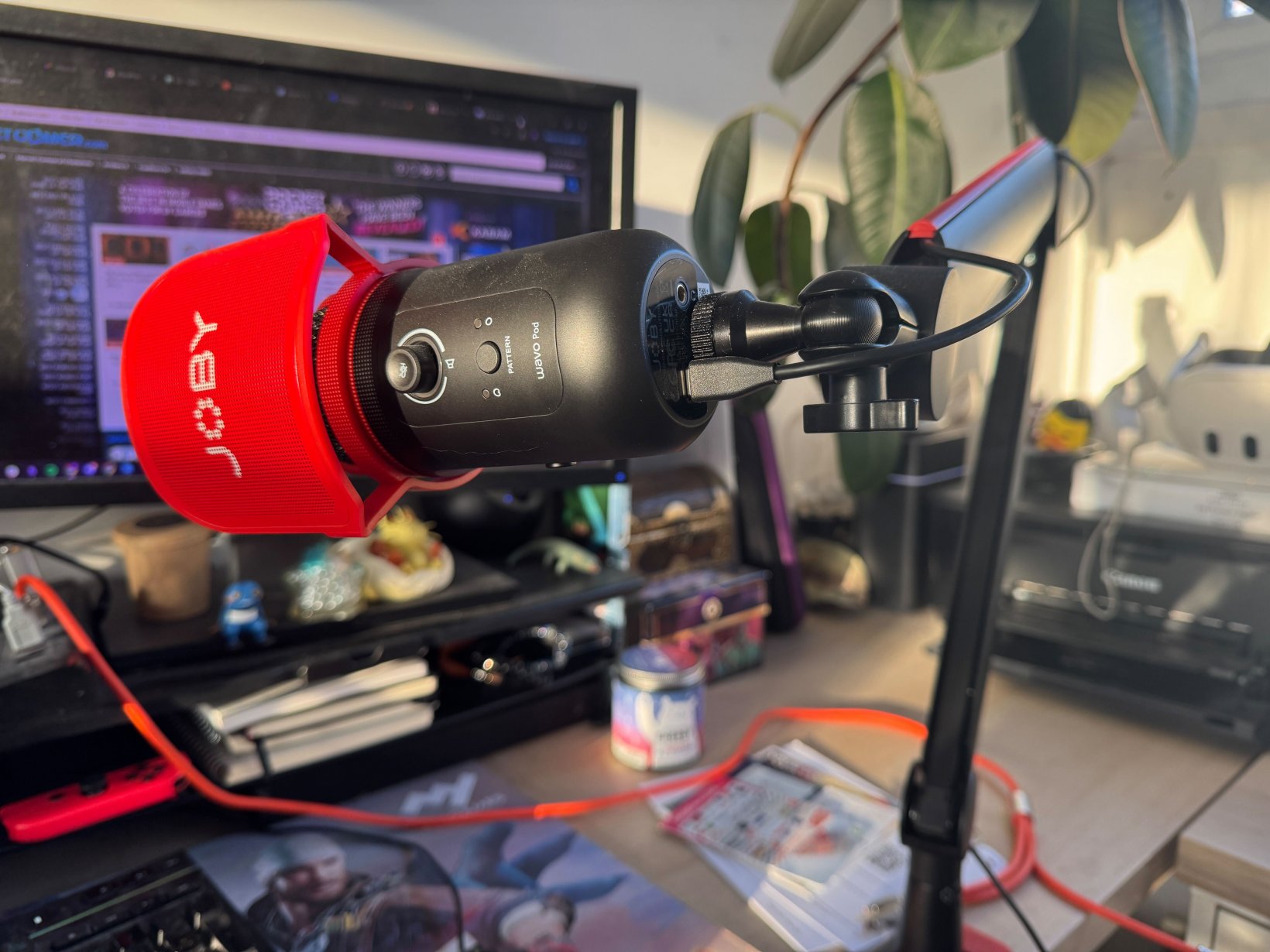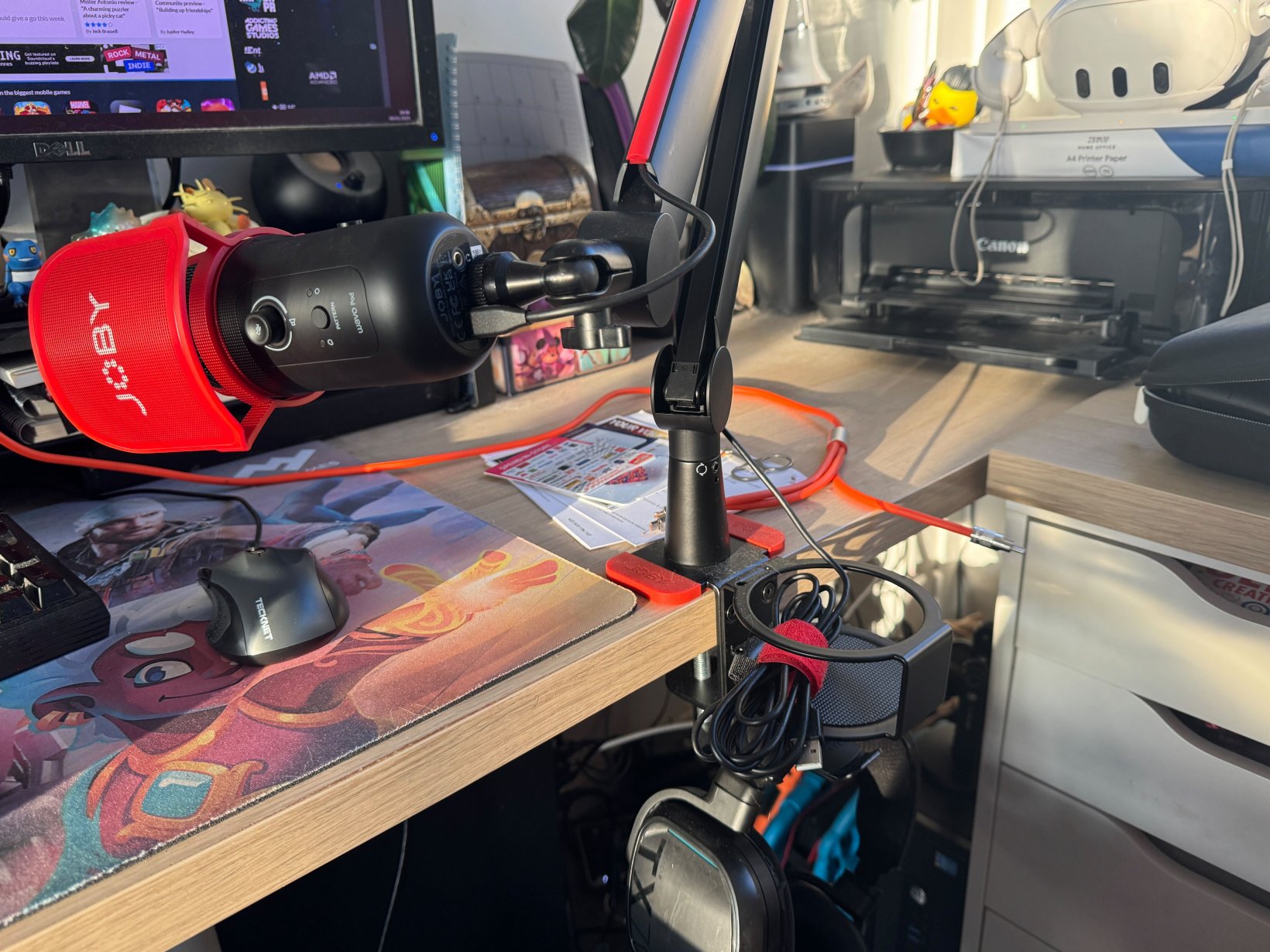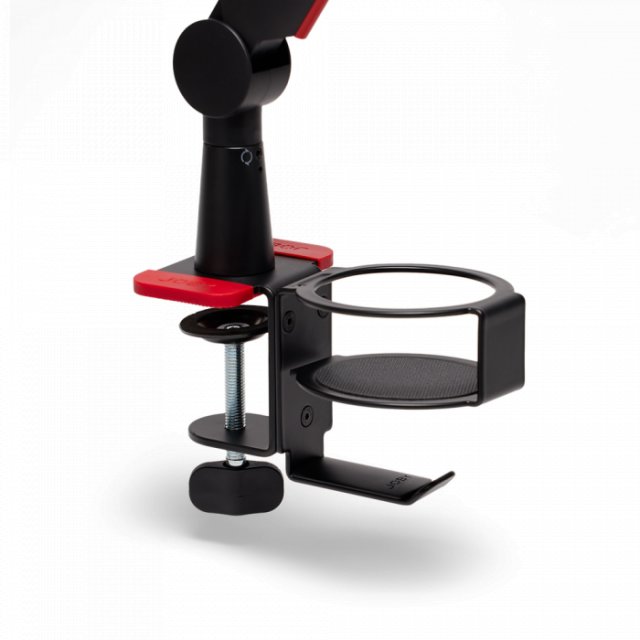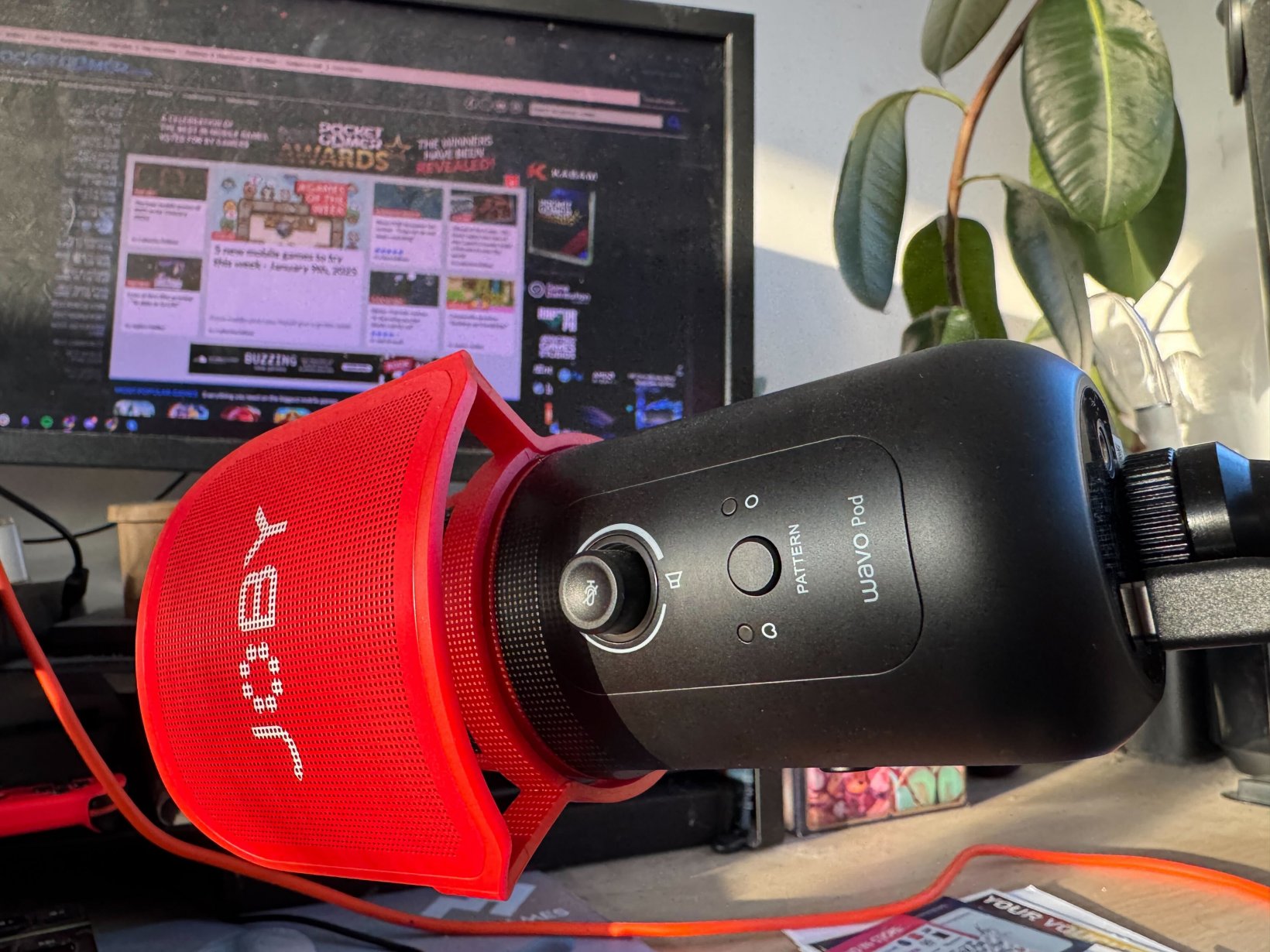- Incredibly easy to install mic arm
- Easy mounting features for headset
- Clear recording and easy access controls
When it comes to grabbing tech to get started with podcasting, streaming or any sort of content creation, it’s incredibly hard to pick from the dozens of brands that are vying for your attention. To this end, Joby has created a podcast streaming kit in the form of the Wavo POD Streamer Kit, which includes a freestanding microphone as well as a desk-mountable arm to suspend it.
As you’re likely aware, our podcast is back up and running again. However, as you can also probably imagine, there are a couple of bits and bobs that need sorting in order to create a podcast: accounts, editing and equipment. I was, until recently, using a very capable (if decade-old) microphone, however, I have an incredibly noisy house and between fans, washing machines and loud pets, my old microphone was picking up an incredible amount of background noise.

Not only that, but my desk is in almost constant use and I move around a lot, so I needed something that could be adjusted to be near me – ideally elevated so that it didn’t pick up me hammering on my keyboard mid-recording.
It was clearly time for a new microphone set up.
Joby’s Wavo POD Streamer Kit comes with a microphone and boom arm, as well as plenty of fittings to make it all work together. The microphone itself, a Wavo Pod, is a compact freestanding microphone with a simple circular base and a U-shaped arm that it can be pivoted on. It’s an incredibly simple and familiar design that only really stands out due to the stark red pop-filter. That said, while I won’t name my previous microphones, it is nice to have a central, easy-to-access mute button.

Pop off the U-frame though and you can mount it to the ‘Wavo Boom Arm’ which is a double-hinged arm that also features a ball-hinge for angling the microphone, as well as a cup-holder and headphone/cable bracket where it attaches to the desk.
I really like the boom arm. There’s a decent amount of tension on it, so you can easily push it out of sight when you’re done with it, and it was incredibly easy to adjust and tighten up (if anything, there were too many tools and pieces inside the package). Critically, for me, it’s been designed with cable management in mind, and you can feed the included USB-C cable for the microphone along the arm before clipping on the brand-red trimming to conceal it.
Now, that’s enough on the actual look of things. When it comes to what I needed from a new microphone it was pretty simple, I needed to minimize background noise, scrap the low rumbling noise that was coming through on the previous microphone, and also minimize vibrations from if I started tapping away on my keyboard during a recording. The arm, with its rubber pads, had already eliminated the third issue.

The first and second issues were likely going to be trickier. That said, the included microphone is a Condenser mic, which in a world (my world) previously overrun with directional and omnidirectional mics, at least promised some change. As it turns out, many of these are just different words for the same thing, and the Wavo Pod has two modes – one ‘cardioid’ (heart-shaped) and another that’s fully omnidirectional. Ultimately the presence of the button to switch between these two modes didn’t really do me any favours, my issue had always been that there were other noises ‘beyond’ me, which still remained there.
The solution actually came in that it’s simply better, more modern tech than my old device – and, looking at the competitors, surprisingly cheap considering that.
 |
The Wavo Pod microphone is sensitive enough to pick up most mutters and mumbles, but the big boon comes in the boom mic. By simply moving the microphone closer to your face, and up and off from the desk, it minimizes a bunch of background noise. The included pop filter does a lot of work to stop you from sounding like a snake (I tried it with it off; there was bad ssssssibilance). There’s also something to be said about the pop filter’s placement. Where only the top 1/4 of the device is an actual microphone, and the pop filter only covers one angle of that, there’s little room for confusion about where to talk when using it in the cardioid mode.
As a final, final note. Joby’s Wavo Pod includes a USB-A to USB-C cable, but also a USB-C to USB-C cable. This means that it can be plugged in (and it is completely plug and play) to most modern phones and used as a supplementary microphone. Now, I’m an iPhone user, and the onboard microphones and sound recording quality have massively improved over the years, however, you can’t deny 1) The Charm, or 2) The previously discussed appeal of the pop filter, and this makes for a quick upgrade that also clearly shows visual intent.
But, regardless of all of these words, if you want to hear the substantial difference that this has brought with it then simply tune into our podcast, you’ll hear the quality shift between episodes 11 and 12.
